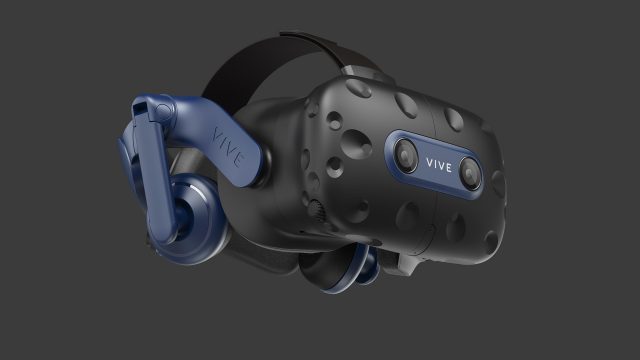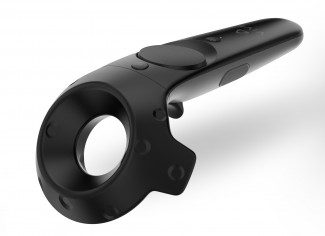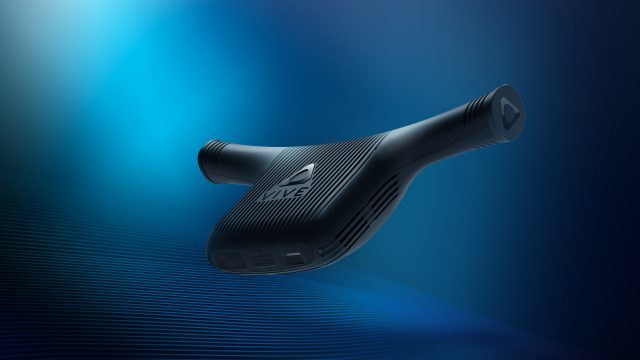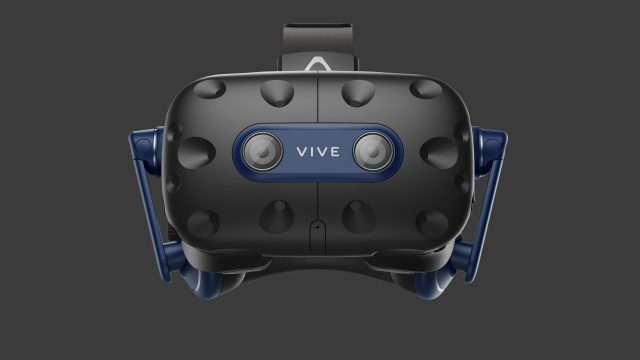HTC today announced the Vive Pro 2, an upgraded version of the Vive Pro headset which first launched in 2018. The new version of the headset brings a huge upgrade to resolution, along with a boost to field-of-view, while retaining compatibility with previously released accessories like the Vive Wireless Adapter and Vive Facial Tracker. The headset itself will sell for $800 with a release date of June 3rd, while a full kit including controllers and base stations will be priced at $1,400 with a release date in July.
HTC today also announced the Vive Focus 3, full details here.
HTC first launched the Vive Pro back in 2018. Aside from its hefty price, which straddled the line between high-end consumer and enterprise, it was a well built headset. The Vive Pro 2 looks to be a return to form in both design and awkward price positioning, bringing an impressive leap in resolution and a boost to field-of-view.
Let’s take a quick rundown of the full specs (a few details are still unknown but we’ve reached out to HTC for more info):
| Vive Pro 2 Specs | |
| Resolution | 2,448 × 2,448 (6.0MP) per-eye, LCD (2x) |
| Refresh Rate | 90Hz, 120Hz |
| Lenses | Dual-element Fresnel |
| Field-of-view | 120° horizontal |
| Optical Adjustments | IPD, eye-relief |
| IPD Adjustment Range | 57–72mm |
| Connectors | USB 3.0, DisplayPort 1.2 |
| Cable Length | 5m (breakout box) |
| Tracking | SteamVR Tracking 1.0 or 2.0 (external beacons) |
| Controllers | Vive wand controllers, rechargeable battery |
| Audio | On-ear headphones, USB-C audio output |
| Microphone | Dual microphone |
| Pass-through Cameras | Yes |
Resolution & Lenses

The biggest upgrade to the Vive Pro 2 is surely the new displays. While the headset moves away from OLED in favor of LCD, the resolution has jumped from 2.3MP (1,440 × 1,600) per-eye on the Vive Pro to a whopping 6.0MP (2,448 × 2,448) per-eye. That gives the headset a class-leading resolution, handily beating out headsets like Quest 2 at 3.5MP (1,832 × 1,920) per-eye, and Reverb G2 at 4.7MP (2,160 × 2,160) per-eye.
In addition to a jump in resolution, the new LCD displays also boost refresh rate from 90Hz to 120Hz. A new dual-element lens design takes the Vive Pro 2 horizontal field-of-view to 120° (up from 110° on Vive Pro), according to HTC.
To push all those pixels, HTC says that Vive Pro 2 is the first headset to support Display Stream Compression, allowing it to handle the huge 719MP per-second throughput on DisplayPort 1.2 when running at full resolution and framerate.
Same Solid Design as Its Predecessor

While the Vive Pro 2 internals have been upgraded, the outer headset is largely the same design as the Vive Pro, which has proven to be a well designed bit of hardware with great ergonomics and smart cable management. This of course means the Vive Pro 2 is sticking with SteamVR Tracking, apparently using the same sensor layout as the original.
Vive Pro 2 also includes a welcome range of ergonomic adjustments, including a dial on the back for tightening the headstrap, an eye-relief adjustment, and an IPD adjustment.
The headphones are also the same as the original headset which we didn’t find to be the best at launch, though they saw some post-launch improvements which brought them up to par.
Vive Wands Are Still Kicking

Vive Pro 2 will continue to lean on HTC’s Vive wand controllers. Those opting for the ‘full kit’ version of the headset will receive the Vive wand controllers and base stations, both supporting SteamVR Tracking 2.0. That of course means that you can use any SteamVR Tracking compatible controller with the headset, including the Valve Index controllers if you so choose.
While many consumer headsets have moved away from the Vive wand and their large trackpads—instead opting for thumbsticks, buttons, and grip triggers—HTC says some still prefer the wand-style controllers, especially in enterprise-use cases where they can be easier to learn for users who aren’t used to gaming controllers.
Compatibility with Vive Wireless Adapter & Facial Tracker

Vive Pro 2 will have compatibility with Vive accessories like the Wireless Adapter and recently released Facial Tracker.
The Vive Wireless Adapter will support up to 90Hz on Vive Pro 2, though it isn’t clear if it will support the headset’s full resolution (we’ve reached out to HTC for more details).
Of course the headset will also support any accessory in the SteamVR Tracking ecosystem, like the Vive Tracker or Tundra Tracker.
Vive Pro 2 Price and Release Date

The headset-only version of Vive Pro 2 has a release date of June 3rd and a price of $800. HTC will begin pre-orders of the headset today with a $50 pre-order discount.
The full kit version of Vive Pro 2 (which includes the headset, controllers, and base stations) will be released in July and priced at $1,400.
Update (May 12th, 2021): HTC clarified that the Vive Pro 2 field-of-view is 120° horizontal. This was previously reported as the diagonal, which has been corrected above.






